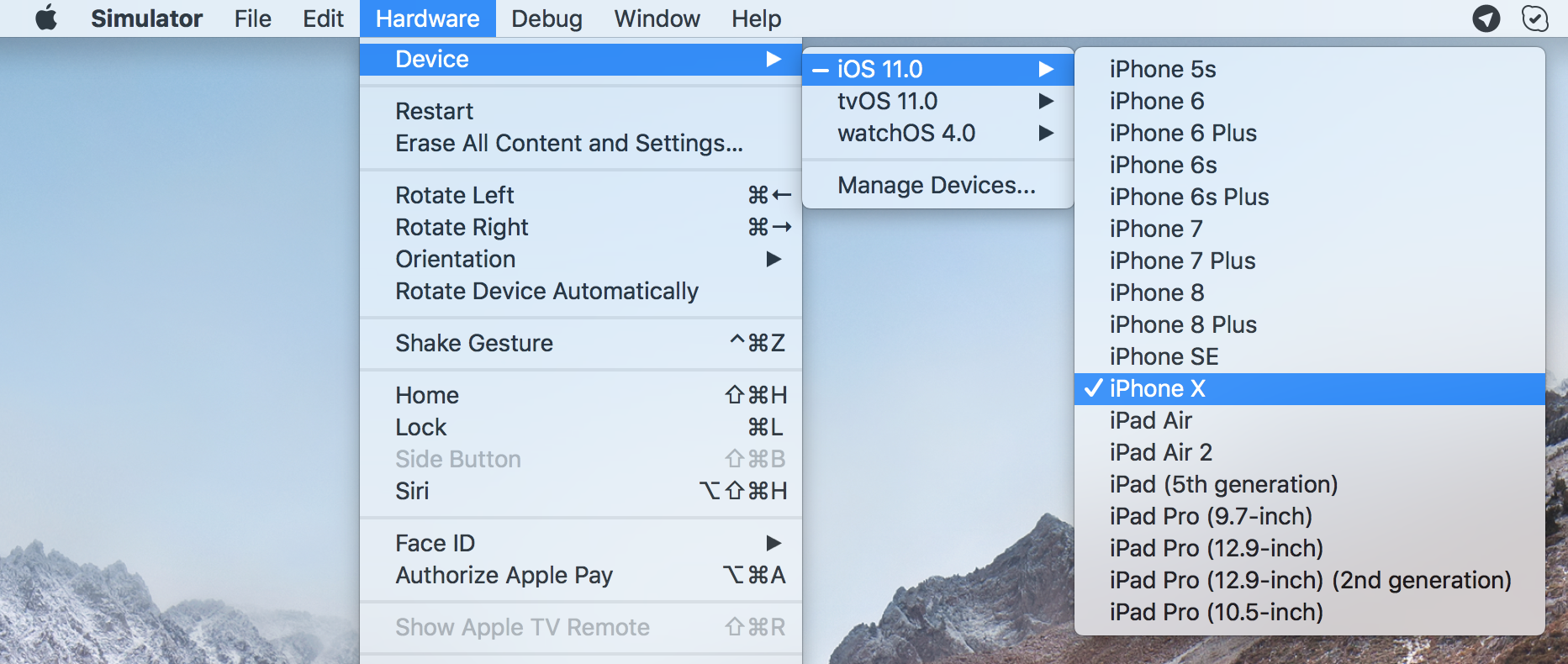Demo Appetize.io's online web based iOS Simulators and Android Emulators directly in your browser. Apple’s homegrown Xcode software development environment for Mac comes with its own app simulator for iOS, tvOS, watchOS, and iMessage. So, if one is using Xcode as the primary app development. The iPhone Simulator is easy to use, and happens to be very convenient for both advanced, and intermediate users. Xamarin TestFlight. The next iOS emulator to run iPhone apps on PC comes in the form of Xamarin TestFlight, the first official Apple emulator that is made for testing the apps developed for iOS. Remoted iOS simulator does exactly as the name suggests. The Remoted iOS Simulator for Windows allows developers to test their apps on an iOS simulator. This iPhone emulator works alongside Visual Studio 2017. Remoted iOS simulator is simple to use and helps developers to properly interact with their apps. Install the application at the specified path to the iOS Simulator without launching the app USAGE $ ios-sim install APPLICATIONPATH ARGUMENTS APPLICATIONPATH the path to the application to launch OPTIONS -d, -devicetypeid=devicetypeid The id of the device type that should be simulated (Xcode6+).
 -->
-->The Remoted iOS Simulator for Windows allows you to test your apps on aniOS simulator displayed in Windows alongside Visual Studio 2019 and Visual Studio 2017.
Getting started

The Remoted iOS Simulator for Windows is installed automatically as partof Xamarin in Visual Studio 2019 and Visual Studio 2017. To use it, follow these steps:
- Pair Visual Studio 2019 to a Mac Build host.
- In Visual Studio, start debugging an iOS or tvOS project. TheRemoted iOS Simulator for Windows will appear on your Windows machine.
Watch this video for a step-by-step guide.
Simulator window
The toolbar at the top of the simulator's window contains a number of useful buttons:
Home – Simulates the home button on an iOS device.
Lock – Locks the simulator (swipe to unlock).
Screenshot – Saves a screenshot of the simulator (stored in PicturesXamariniOS Simulator).
Settings – Displays keyboard, location, and other settings.
Other options – Brings up various simulator options such as rotation, shake gestures, and Touch ID.
Settings
Clicking the toolbar's gear icon opens the Settings window:
These settings allow you to enable the hardware keyboard, choose alocation that the device should report (static and moving locations areboth supported), enable Touch ID, and reset the content and settings forthe simulator.
Other options
The toolbar's ellipsis button reveals other options such as rotation,shake gestures, and rebooting. These same options can be viewed as a listby right-clicking anywhere in the simulator's window:
Touchscreen support
Ios Simulator
Most modern Windows computers have touch screens. Since the Remoted iOSSimulator for Windows supports touch interactions, you can test your appwith the same pinch, swipe, and multi-finger touch gestures that you usewith physical iOS devices.
Similarly, the Remoted iOS Simulator for Windows treats Windows Stylusinput as Apple Pencil input.
Sound handling

Sounds played by the simulator will come from the host Mac's speakers.iOS sounds are not heard on the Windows computer.
Disabling the Remoted iOS Simulator for Windows
Ios Simulator App
To disable the Remoted iOS Simulator for Windows, navigate toTools > Options > Xamarin > iOS Settings and uncheckRemote Simulator to Windows.
Ios Simulator Ipad
With this option disabled, debugging opens the iOS Simulator on the connected Mac build host.
Troubleshooting
If you experience issues with the Remoted iOS Simulator, you can view the logs in these locations:
- Mac –
~/Library/Logs/Xamarin/Simulator.Server - Windows –
%LOCALAPPDATA%XamarinLogsXamarin.Simulator
Ios Simulator Apple
If you report a problem in Visual Studio, attaching these logs might be helpful (there are options to keep uploads private).